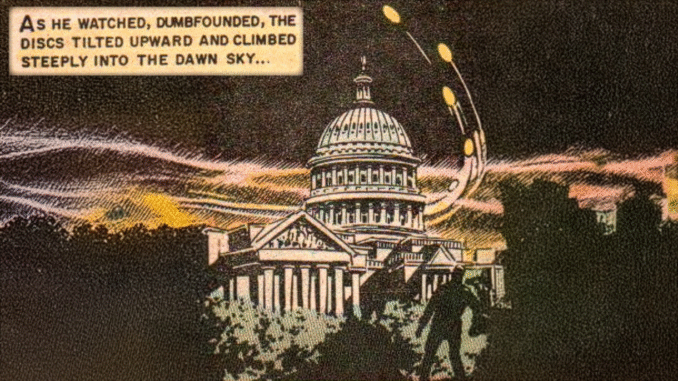
Straying still further from whatever dubious graces it once presumed, academia’s luciferous descent into murky realms of huddled speculation continues unabated. Relocated, reconstituted, in ever-fading cycles, the Oxford Internet Institute at the University of Oxford once again saw fit to deprive its students of the peace and comfort of banal rationality through this fourth annual Halloween Lecture.
In the absence of fresh insight, this year’s lecture revisits the chilling implications of humanity’s contact with inexplicable aerial and marine phenomena, drawing from the faintest whispers of the ante-historical record through to the shimmering echoes of statistical reasoning. Through what means do visitors from beyond the void encroach on our night-time skies? What subtle deceptions underpin their visible geometries? What values lie behind their peculiar interests in certain uncomfortably-favoured regions?
Despite all safeguards, and in the face of numerous barely-perceptible currents opposing such efforts, this event was captured, stored, and released into a world still cruelly unprepared to face its findings.
More details, and the underlying code, for these findings can be found–for those unwary enough to look–in the series of entries beginning here.
2025-bayes_vs_invaders-redivivusOxford Internet Institute Halloween Lecture
Bayes vs. the Invaders (Redivivus): A Bayesian Analysis of 70 Years of UFO Sightings
Prof. Joss Wright
Oxford. October 2025The searing heat of summer retreats, cools, fades, surrendering its vitality to the flickering uncertainties of autumn. Nights draw close, like dimly-remembered friends clustering in our dreams. The spring leaves abandon their verdant dance, as they age, wither, and drift into a russet swirl of skeletal, wind-stirred fragments.
The dying seasons return, dragging with them time-hallowed fears and uneasy rumours, pooling around these darkly dreaming spires in a mire of primal superstition. The agonizingly brittle certainties of the modern enlightenment, our desperate faith in the gossamer fabrics of scientific progress, falter in the face of primal terrors that lurk implacably in the gloom.
In these darkening days, as faith in our treasured understanding dims, it is yet again time to turn our faces fully to the darkness. Halloween, slouching inexorably towards our minds, impels us as scholars to gather our methods, our theories, our data, our knowledge; and glean what light we can from the primordial glimmers of the unknown.
Unidentifiable aerial and marine phenomena. Impossible lights in the sky. Patterns of visitation and terror. Insidious influences from the hadal voids between the stars. Who–what–swoop and glide through the ink-black nights of our world, probing and testing our structures, our societies, our minds? From barely remembered history, to early reports of impossible objects, to blurrily evidenced documentation, data concerning flying arcane observations has grown and twisted, along with our capacity to lay them bare, to subject them to analysis, and to interrogate their secrets.
In this year’s OII Halloween Lecture, we will tremblingly revisit a Bayesian analysis of seventy years of UFO sightings, drawn from a dataset collected by the National UFO Reporting Center (NUFORC). Scepticism, fear, doubt, and most accepted standards of statistical rigour, will be cast aside in our unyielding and disquieting pursuit of an uncompromised truth.

Be the first to comment
This site uses User Verification plugin to reduce spam. See how your comment data is processed.